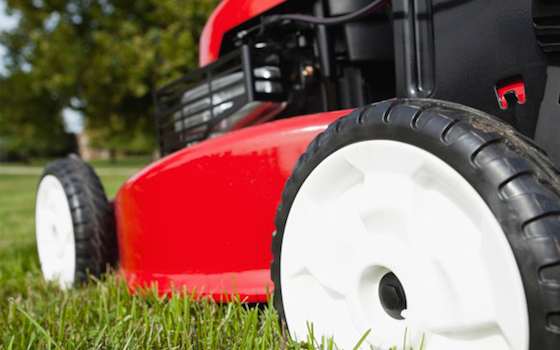- MENU
- HOME
- SEARCH
- WORLD
- MAIN
- AFRICA
- ASIA
- BALKANS
- EUROPE
- LATIN AMERICA
- MIDDLE EAST
- United Kingdom
- United States
- Argentina
- Australia
- Austria
- Benelux
- Brazil
- Canada
- China
- France
- Germany
- Greece
- Hungary
- India
- Indonesia
- Ireland
- Israel
- Italy
- Japan
- Korea
- Mexico
- New Zealand
- Pakistan
- Philippines
- Poland
- Russia
- South Africa
- Spain
- Taiwan
- Turkey
- USA
- BUSINESS
- WEALTH
- STOCKS
- TECH
- HEALTH
- LIFESTYLE
- ENTERTAINMENT
- SPORTS
- RSS
- iHaveNet.com: Home & Garden

Tuning up Power Equipment for Spring
by Ron Marr
Your lawn and garden machinery might not share your righteous appreciation of warm days and blue skies.
Mowers, blowers and trimmers tend to be out of sorts when awoken from their winter slumber. A bit of TLC and end-of-winter maintenance will soon put them in fine form. A couple hours dedicated to tune-ups will also save you time, money and aggravation in the months ahead.
Lawnmower Tune-Up Tips
1. Start by cleaning dried and compacted grass from the underside of the mower deck. Soak caked-on grass with a hose, and then scrape it off with a screwdriver or putty knife. Wear gloves to avoid green-tinged hands.
2. Replace any belts that show signs of wear, or that are more than four years old.
3. Remove the blade (or blades) and sharpen it. Most small engine shops will sharpen blades for a very small fee. Sharper blades make for faster, more accurate jobs.
4. Check the air pressure in your tires. Inflate them to the specs shown in your mowers manual. If you lost that manual in 1994, check the model number online -- many manuals can be found there, regardless of the machines age.
5. Change the oil and filter. Oil flows more easily if you run the engine for a few minutes before draining.
6. Inspect the fuel filter -- and the line running from the filter to the tank. Its a good idea to replace them annually.
7. Clean the air filter by blowing it out with an air compressor. Replace the filter if its extremely dirty (or black).
8. Replace the spark plugs.
9. Test your mowers battery. A few hours on a charger might return it to full power.
10. Flush old gasoline from the tank. Replace it with fresh fuel and add fuel stabilizer.
11. If your mower lacks an electric starter, inspect the starter cord and tensioning spring.
Tuning up the Two-Stroke
The basics of lawnmower engine maintenance also apply to other lawn contraptions like leaf blowers, trimmers and weed whackers. For these machines, you should also change filters and plugs, inspect lines, check batteries and perform a thorough inspection -- but there is one crucial difference. Most of these devices are powered by two-stroke engines (as opposed to the four-stroke engines found in mowers).
Two-stroke engines typically require an oil and gasoline mixture. Keeping this in mind, empty and refill the tank according to manufacturers specs. Remember, different types of machines have different needs.
Leaf Blowers
1. Make sure the throttle trigger, throttle lock and stop switch are working as intended.
2. Look over the collection bag on a leaf blower. It should be free of rips and holes, and the zipper should be functional.
3. Clean the fan blades on the flywheel.
4. Inspect the engine housing, making certain its free of cracks.
Trimmers
1. Make sure the throttle trigger, throttle lock and stop switch are working as intended.
2. Inspect the blade and blade guard. The blade must be centered and should be sharpened. Off-center blades cause vibrations that can damage the machine, which can possibly lead to injury. Replace a cracked blade or blade guard.
3. Check for worn areas on the clutch, clutch spring and clutch drum.
Ron Marr is a long-time woodworker and luthier whose work can be seen at marrsguitars.com. He is also a frequent contributor to The Workbench Life
AUTOS | HOBBIES | EDUCATION | FAMILY | FASHION | FOOD & RECIPES | HOME DECOR | RELATIONSHIPS | PARENTING | PETS | TRAVEL | WOMEN
Article: Copyright ©,
Home & Garden: "Tuning up Power Equipment for Spring"